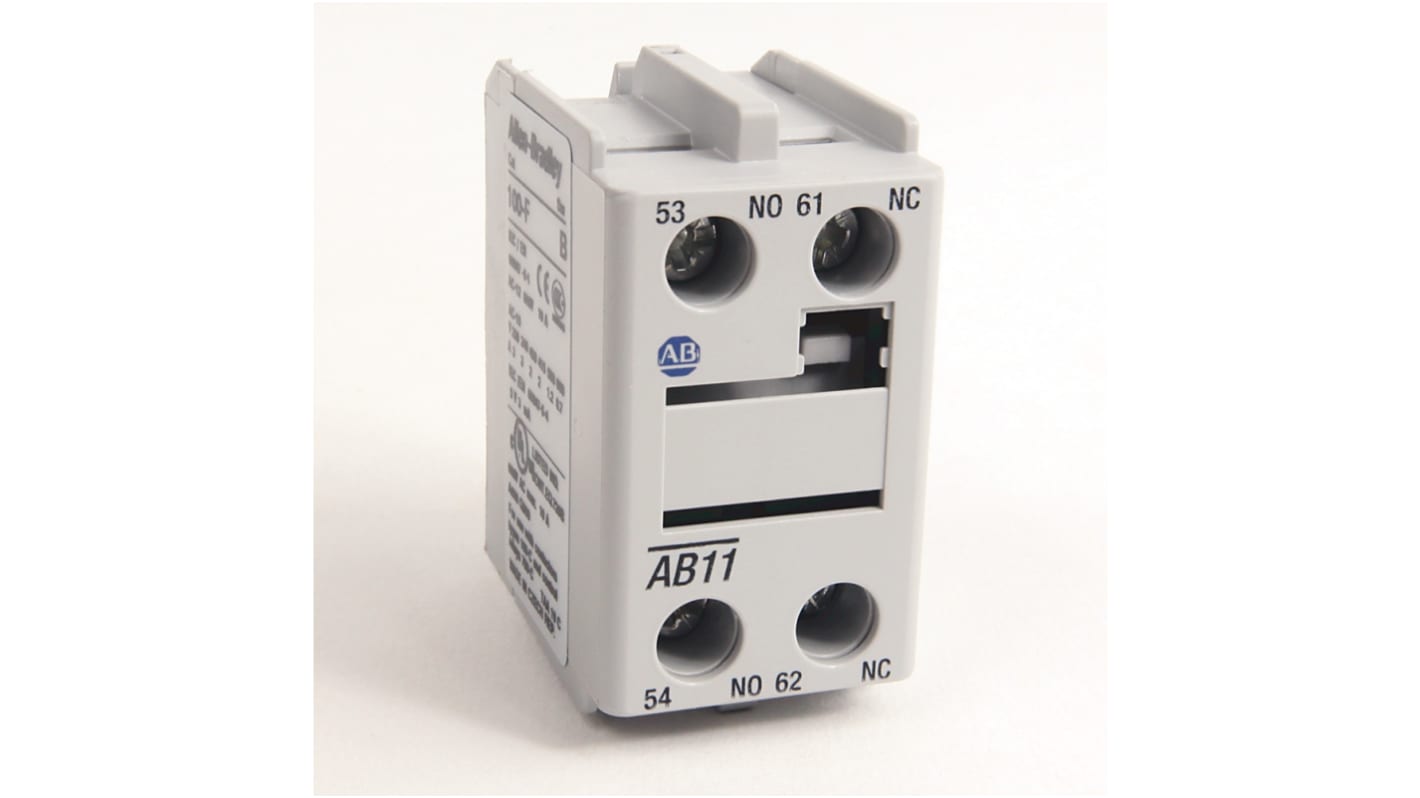Allen Bradley Auxiliary Contact, 2 Contact, 2NO, Front Mount 100F
- RS Stock No.:
- 238-1036
- Mfr. Part No.:
- 100-FA20
- Brand:
- Allen Bradley

Subtotal (1 unit)*
£12.94
(exc. VAT)
£15.53
(inc. VAT)
FREE delivery for orders over £50.00
In Stock
- Plus 1 unit(s) shipping from 01 December 2025
- Plus 19 unit(s) shipping from 15 December 2025
Need more? Click ‘Check delivery dates’ to find extra stock and lead times.
Units | Per unit |
|---|---|
| 1 + | £12.94 |
*price indicative
- RS Stock No.:
- 238-1036
- Mfr. Part No.:
- 100-FA20
- Brand:
- Allen Bradley
Specifications
Technical Reference
Legislation and Compliance
Product Details
Find similar products by selecting one or more attributes.
Select all | Attribute | Value |
|---|---|---|
| Brand | Allen Bradley | |
| Number of Contacts | 2 | |
| Normal State Configuration | 2NO | |
| Mounting Style | Front Mount | |
| Series | 100F | |
| Contact Current Rating | 10 A | |
| Terminal Type | Screw | |
| Pole and Throw Configuration | DPST | |
| Select all | ||
|---|---|---|
Brand Allen Bradley | ||
Number of Contacts 2 | ||
Normal State Configuration 2NO | ||
Mounting Style Front Mount | ||
Series 100F | ||
Contact Current Rating 10 A | ||
Terminal Type Screw | ||
Pole and Throw Configuration DPST | ||
RoHS Status: Exempt
- COO (Country of Origin):
- CN
MCS Auxiliary Contact Modules
10A rated (AC1)
Blocks per contactor 2 side + 1 top (max. 8 contacts)
Min. switching 17V 5mA (DIN 19240)
Blocks per contactor 2 side + 1 top (max. 8 contacts)
Min. switching 17V 5mA (DIN 19240)
Allen Bradley Auxiliary Contact For Use With 100-C Contactors, AC/DC Control - 100-FA20
Use this Allen Bradley auxiliary contact from Rockwell Automation for signal switching in your industrial equipment. It's designed for use with contactors in the 100-C series and is mechanically linked to the main control circuit. This means that it switches at the same time as the contactors to activate secondary control functions like remote status indication. The contact's terminals are located out of reach of your fingers to avoid accidental touching of live parts, ensuring safe operation. You'll find this unit used on industrial motors.
• Rated impulse withstand voltage of 6kV to handle sudden power surges without damage
• Broad operating temperature range of -40°C to +60°C for use in challenging conditions
• Can be used on both AC and DC circuits for versatility
• IP20 rating indicates that it's protected from objects larger than 12mm in size
• Broad operating temperature range of -40°C to +60°C for use in challenging conditions
• Can be used on both AC and DC circuits for versatility
• IP20 rating indicates that it's protected from objects larger than 12mm in size
Standards and Certifications
• CE
• cULus
• IEC
• CCC
• cULus
• IEC
• CCC
How do I mount this auxiliary contact?
This auxiliary contact is designed to be front mounted directly onto the contactor. The process is simple and doesn't need any tools, so saves you time and effort.
